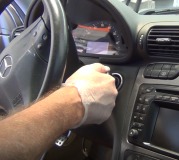I don't know what's up with a lot of these dealership mechanics nowadays. It seems as though if they have access to manufacturer support they should be able to figure out any issue.
To diagnose any no-start, you just have to follow a logical order (with a good grasp of what an engine needs to start and run)
1) Spark at plugs
2) Fuel at injectors
3) Compression in the cylinders
4) A functioning control system (computers and sensors)
The diagnosis is to be done in that order, with a thorough inspection of all the components of that system. (You'll need the necessary tools)
As a quick example: For spark to get to the plugs, you first need a good battery/cables/connectors. Then the ignition key and its associated wires/connectors must be functioning correctly. Next the computer has to see a signal from the crank/cam sensor before it will send a signal to the coils to fire. Then the coils must "Step-up" the voltage and fire it through the spark plug wire, and finally at the plug.
Your test is to begin at the plugs to determine if they are firing (spark must be crisp and bright). If it is, then the ignition system is good and you proceed to next step (fuel system). If there's no spark at any plug, then you move your diagnosis to the beginning of the system (battery) and move forward until you isolate the problem. Experience techs can move directly to a certain component, bypassing a part of the system. But you should not.
Sunday, February 13th, 2011 AT 12:25 AM




